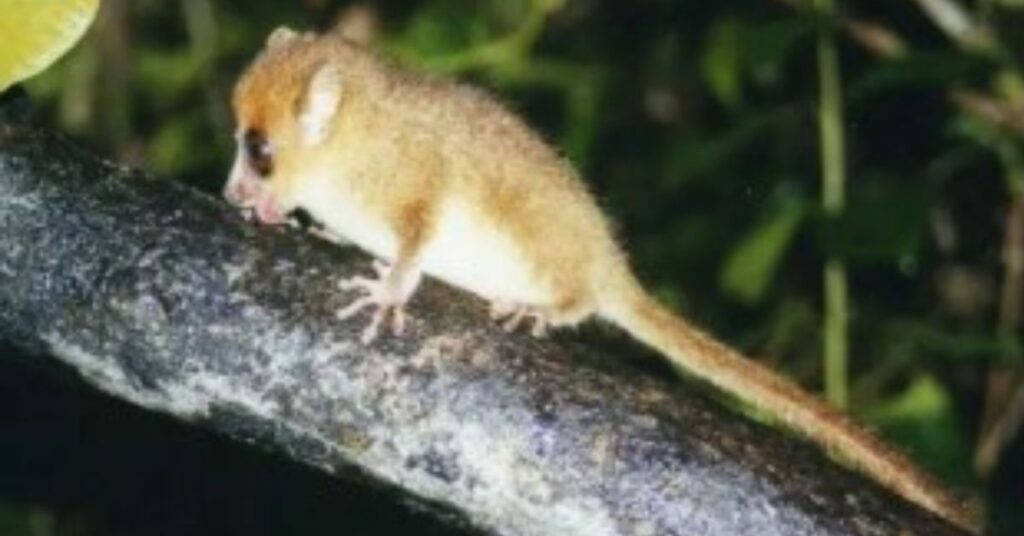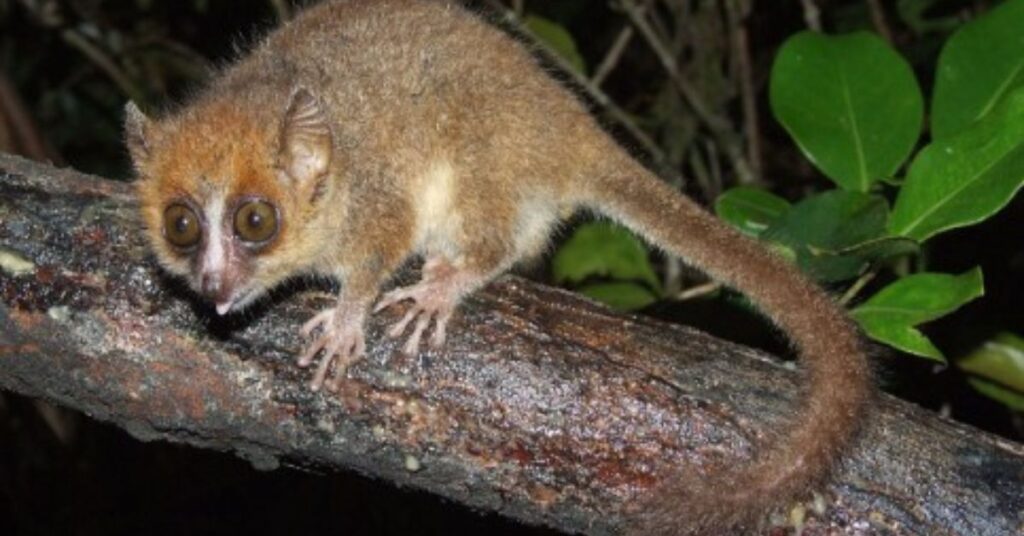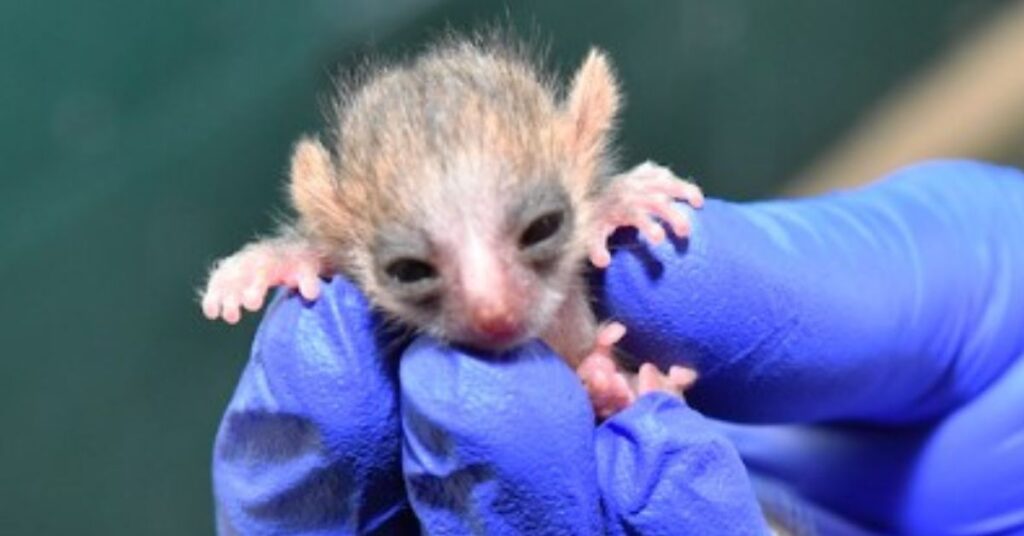What are Mouse Lemurs
Mouse Lemurs are tiny and unique! They have special grooves on their fingers to help them climb trees! Invariably Mouse Lemurs are tiny and unique! They have special grooves on their fingers to help them climb trees!
Obviously they are not rodents, they are tiny primates.
Mouse Lemurs live in Madagascar, an island off the coast of Africa! They’re exclusive to Madagascar!
They live in trees and feed on fruits, nectar, as well as insects!
The Scientific Classification of Mouse Lemurs
| Scientific classification | |
|---|---|
| Domain: | Eukaryota |
| Kingdom: | Animalia |
| Phylum: | Chordata |
| Class: | Mammalia |
| Order: | Primates |
| Suborder: | Strepsirrhini |
| Family: | Cheirogaleidae |
| Genus: | Microcebus |
Mouse Lemurs are a type of primate, specifically belonging to the family Cheirogaleidae within the order Primates.
They belong the name Microcebus, which is a genus of small, nocturnal primates endemic to Madagascar!
The scientific name for Mouse Lemurs is Microcebus, which is the genus they belong to. Within this genus, Zoologists recognized more than 20 species of these creatures, each with its unique characteristics as well as their habitats!
Some of the most well-known species include:
- Gray Mouse Lemur (Microcebus murinus)
- Northern Rufous Mouse Lemur (Microcebus tavaratra)
- Southern Rufous Mouse Lemur (Microcebus lehilahytsara)
- Golden-brown Mouse Lemur (Microcebus ravelobensis)
- Goodman’s Mouse Lemur (Microcebus lehilahytsara)
- Danfoss’ Mouse Lemur (Microcebus danfossi)
- Snouted Mouse Lemur (Microcebus spp.)
- Pygmy Mouse Lemur (Microcebus myoxinus)
- Boosh’s Mouse Lemur (Microcebus berthae)
- Red-fronted Mouse Lemur (Microcebus rufus)

However, these are just a few examples, and there are many more species within the Microcebus genus!
The size of Mouse lemur
Mouse Lemurs are tiny! Adults weigh around 1.5 oz and are about 5.5 inches long! So small and cute! Anyway, there are no difference in the size of male and female. i.e, Males and females are similar in size. Both are tiny and adorable!

They have a long, thin tail that helps them balance while climbing trees! Their tail is usually longer than their body. Around 6-8 inches! While their body is around 5.5 inches long.
They have tiny teeth! Perfect for eating their favorite fruits and insects! They have around 30-32 teeth. Not too many, but enough for their small size!
Life Cycle of Mouse Lemurs
Mouse Lemurs usually have litters of 1-2 babies. Not too big, but enough to keep them company!

The youngs reach puberty around 6-9 months old. Still very young and cute!
The mothers have a gestation period of around 60-65 days before those adorable babies arrive!
Adult females typically give birth once a year. So they’re not too frequent, but still cute and fun!
Female Lemurs do have a menstrual cycle as like as primates! The active females have a menstrual cycle of around 20-28 days. Not too different from us! Further more, the females do bleed during their menstrual cycle. Just like us primates!
Life span of Mouse Lemurs
Wild Mouse Lemurs typically live for 10-12 years. While in captivity, they can live up to 20 years or more. By virtue, it’s a relatively long life for such tiny, adorable creatures!
Are they kept in any zoo?
They are rarely found in zoos or captivity. Because of their unique needs and conservation status make it challenging to keep them in captivity. It’s important to appreciate as well as protect them in their natural habitat!
Do people rear them as pets?
Nope! It’s illegal to keep them as pets as because they’re protected by law! So people can not rear them as pets.
Do they live in groups or separately?
Female Mouse Lemur usually lives in groups called “troops,” while males are solitary. Since, They gather together for safety and to share resources!
How they conjugate?
Male Mouse Lemur marks their territories with scent glands and vocalizations. On the other hand Female Mouse Lemurs in heat attract males by producing specific calls. When a suitable mate is found, they mate for just a few seconds!
How is their family life?
Female Mouse Lemur forms strong social bonds within their troops. They groom each other, share food, and help raise young. Hence It’s a cooperative, loving family life! Does the male master on the females? Male Mouse Lemur does n’t master females in their troops. Females are dominant and make decisions about troop behavior and resource sharing. It’s a balanced, equal relationship!
Female Mouse Lemur usually gives birth to just one or two babies per litter. They have one litter per year, with a gestation period of around 60-65 days. It’s a small, intimate family for these tiny primates!
Female Mouse Lemur has two teats! Just like most mammals, they nurse their young with these. Female Mouse Lemur typically breastfeeds their babies for around 8 to 12 weeks. They invest a lot in their little ones!
While littering do they make any nests?
Nope! Female Mouse Lemurs don’t make nests for their litters. They simply find safe, hidden areas in trees or dense vegetation to give birth and care for their babies. It’s a natural, cozy environment!
Are Mouse Lemurs endangered species?
Yes, Mouse Lemurs are an endangered species. Further more they’re native to Madagascar and need our protection! Since there are around 2,000 to 6,000 Mouse Lemurs left in the wild. So, Let’s work together to protect them!
What are the threats?
Unfortunately Mouse Lemurs face threats like habitat loss, deforestation, and hunting. Obviously we need to conserve their natural habitats to save them!
Protection Measures
To protect Mouse Lemurs:
- Support conservation organizations.
- Reduce deforestation and habitat destruction.
- Educate locals about the importance of Mouse Lemurs.
- Avoid buying products from companies that contribute to deforestation.
Together, we can save these adorable creatures!
Further more you can read: Leopard A Graceful Predator

